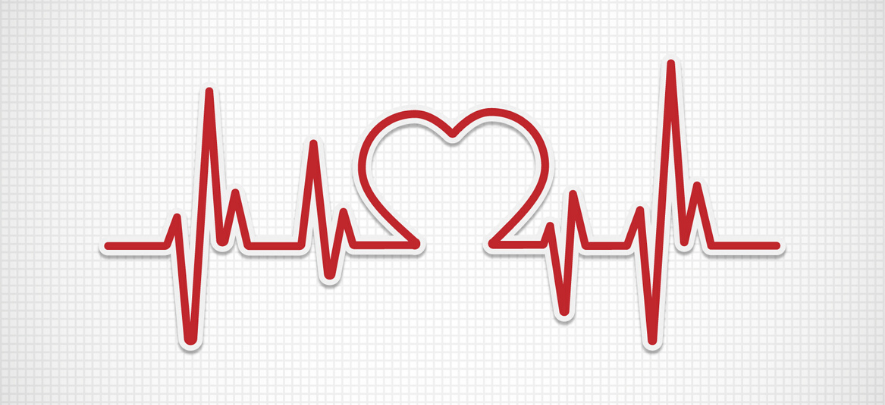

COVID-19 SME Forum
GlobalLinker and Wadhwani Advantage have together partnered with industry experts and leaders to help your business be better prepared

275 week ago — 8 min read
There is a cardinal rule in nature: After every storm, wildfire and other disasters, time comes for the sprouting of green shoots. COVID-19 has left the world battered and bruised across multiple sectors and silos; it has left nations helpless and ripped its resolve. India is no exception though the virus has had a milder run so far compared to other nations.
Another cardinal rule of nature is that disasters do not last forever; the COVID-19 virus is no exception. It will taper off in months to come. And then there would be a spring of hope, a time for green shoots.
This is what India’s healthcare sector should be looking for – life after COVID 19. There is no gain saying that India’s healthcare sector has been badly shattered and stretched to its seams by the virus. But every dark cloud has a silver lining.
Healthcare sector leaders should look at converting this Covid gloom into an opportunity to service the mankind by bouncing back!
What the sector should be looking out for are the silver linings in the dark and ominous COVID 19 cloud. Post COVID 19, there would be plenty of green offshoots. The question now is should we be down in despair or look at the road ahead. Surely, India’s healthcare sector is made of sterner stuff and has the DNA to bounce back with extra vigour.
Some of the sectors that would see large opportunities emerging on the horizon are: testing kits, medical consumables, medical devices, pharmaceutical sector and mid-size hospitals, especially in tier two and three cities and rural areas.
The biggest opportunity would be in developing rapid testing kits. At present, India is importing these kits from Singapore and other countries. India can easily ramp up its resources to produce these kits indigenously.
There is research that shows that COVID-19 may make a comeback later this year. The coronavirus killers so far have been Sars-CoV, Mers-CoV and Sars-CoV-2. Researchers now say that if not COVID-19 making a comeback, there are other viruses waiting in the pipeline to jump from animal hosts to human beings. This makes the case for developing rapid tests more stronger.
Rapid testing kits throws open a big opportunity for the medical devices industry. India can easily ramp up its resources to produce these kits indigenously.
There is also an opportunity for India’s vast reservoir of IT talent working with biotechnology scientists and researchers to develop smarter rapid testing kits. Some countries are toying with the idea of developing drive-in testing kits with no human interface, except the suspected carrier. With India being at the cusp of IT and BT, such opportunities are there for the asking. Hard-focused startups would have a major role in developing such smart rapid testing kits.
Estimates show that India alone would need 1.6 million testing kits in the next two months and there is a huge opportunity for exports.
Any war against viruses such as COVID-19 need doctors, nurses and paramedical staff. They are the frontline foot soldiers in the battle against viruses. There is a paramount need to protect the medical community. The COVID-19 virus has ******* nations to the shortage of on Personal Protective Equipment (PPE) such as whole-body protection wear with airline facility, half and full face masks, gloves etc.
According to an estimate by the government of India, the next two months would witness a huge spike in the need for about 27 million N95 masks, 15 million PPEs, 1.6 million diagnostic kits. This was conveyed to industry representatives during a meeting on April 3 of the empowered group of officials on “coordinating with private sector, NGOs and international organisations”, which is headed by the NITI Aayog CEO Amitabh Kant, according to The Indian Express.
In this field too technology has a role to play. Apple is designing and producing face shields to protect health workers and medical staff from the novel coronavirus. The first set of Apple-designed face shields were delivered to Kaiser Permanente hospital facilities located in California’s Santa Clara Valley last week. Each shield assembles in less than two minutes and is fully adjustable.
Apple plans to ship 1 million face shields by the end of this week, and 1 million per week after that. Startups in India can catch the ‘Apple wind’ and design and produce such face shields in a very cost effective manner. Apple has been working closely with health and government officials across the US and this is what should happen in India too.
The war against COVID-19 will see an exponential growth in medical devices. Topping the list is ventilators. According to the government of India, the demand of ventilators has been estimated to be 50,000 by June 2020. Out of these, 16,000 are already available and orders has been placed for 34,000 ventilators.
Organisations like the DRDO, the Indian Railways and a few startups have designed prototypes ventilator. All that is needed is a slight tweaking and major ramp up to meet the demand in the future.
Developing frontline drugs against Coronaviruses and a vaccine against COVID-19 are the fields that would witness a huge growth. Already pharmaceutical companies have started work in developing a vaccine against COVID-19. And at a time with the battle against COVID is getting tougher, the government should fast-track such initiatives.
There has also been a huge worldwide demand for anti-malaria drug hydroxychloroquine and paracetamol from India. COVID-19 will give an opportunity for the growth of pharma sector, especially generic drugs.
The huge spike in deaths due to COVID-19 world over has been due to lack isolation units and hospital beds. This is what happened in Italy, Spain, UK, New York and other places.
It should be noted that the virus will not knock out people. Look at what happened in Italy where it was not the virus that killed thousands of patients but the deluge of patients which overwhelmed the hospitals and forced doctors to decide who should be saved and who should be left to die.
Lombardy claims to have one of the most advanced healthcare systems in the world, but they couldn’t ventilate a huge patient load, especially elderly patients with respiratory distress.
According to Dr Devi Shetty, if we extrapolate the Lombardy data to a city like Bengaluru, we will have about 16,000 positive patients, 2,400 will need hospitalisation, 2,000 will need ICU care and 1,000 will require ventilators.
Are we prepared is the question. A back of the envelope calculation would say that we are ill prepared if we reach the tipping point in the virus spread.
Fundamentally, it’s a question of capacity in the healthcare system. And it is here that mid-size hospitals would play a fundamental role in the future, especially in taking the load off the over-stretched hospital in metros and other urban cities.
Along with this comes the opportunity to have more doctors, nurses and paramedical staff.
But the biggest losers in the COVID rampage would be medical tourism and medical value travel. Here the green shoots will take time to sprout and this time should be utilised to refurbish and enhance the capacity of the sector.
Instead of burying our head in despair, the healthcare sector should look ahead and smell the coffee.
Image source: freepik.com
To explore business opportunities, link with me by clicking on the 'Invite' button on my eBiz Card.
Disclaimer: The views and opinions expressed in this article are those of the author and do not necessarily reflect the views, official policy or position of GlobalLinker.


COVID-19 SME Forum
GlobalLinker and Wadhwani Advantage have together partnered with industry experts and leaders to help your business be better prepared
Most read this week
Trending
What is the Curse of Knowledge? How Does it Impact Communication?
Learning & Development 21 week ago
Learning & Development 59 week ago
Comments
Share this content
Please login or Register to join the discussion